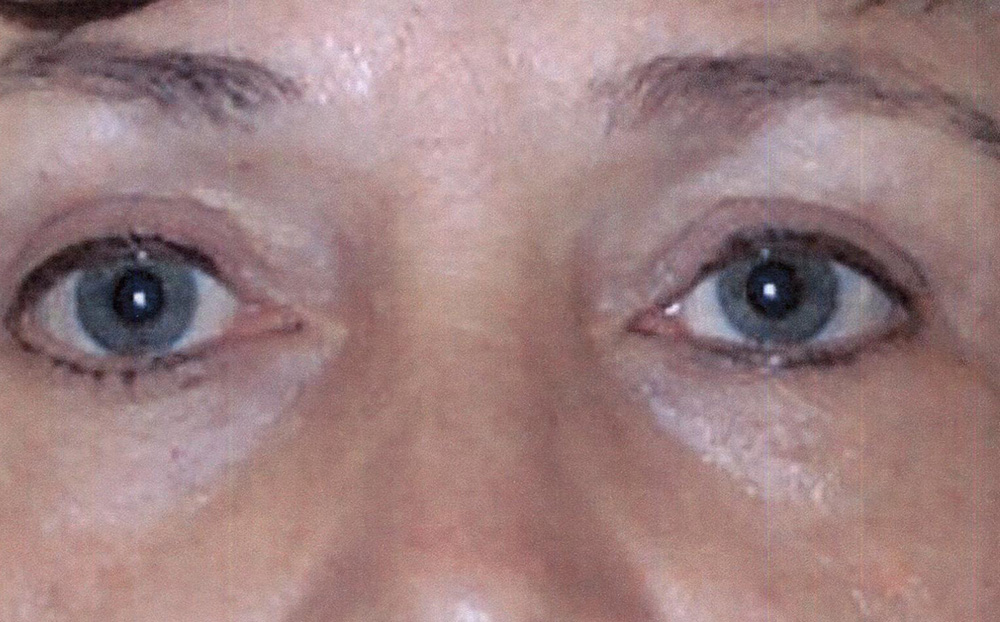Eyelid Surgery
Eyelid Disorders
Having an eyelid problem may affect your vision, your appearance or cause discomfort and even pain. These problems include excess upper eyelid skin (dermatochalasis), a droopy upper eyelid (ptosis), or eyelids that turn inward (entropion) or eyelids that roll outward (ectropion).
Some patients have eyelid lesions or growths that can be benign or cancerous. These conditions can be diagnosed and treated in the office by Dr. Gleason and Dr. Janky.
Types of Eyelid Surgery
Blepharoplasty
Eyelid skin is thin and tends to stretch over time. Sometimes the upper eyelid skin stretches too much causing excess eyelid skin that droops down on the eyelids. If it stretches enough to droop on your eyelashes and limit your side vision, surgical removal may be covered by insurance.
A very small amount of excess skin that doesn’t limit your vision may still be removed, but would be considered ‘cosmetic’ and therefore an out-of-pocket expense.
When the lower eyelid skin stretches you may form ‘bags’ under your eyelids. This usually does not limit your vision and therefore surgical repair is usually not covered by insurance. It is considered ‘cosmetic’ and coverage would be an out-of-pocket expense.
Dr. Gleason and Dr. Janky can remove excess upper eyelid skin in a procedure called blepharoplasty. At the same time they may also remove any extra fatty tissue near the eyelid.
Dr. Gleason also does cosmetic lower eyelid surgery and removes the extra fatty tissue in the lower lids and tightens the lower eyelid tissues.
Blepharoplasty helps make the area around the eye and lid look more clearly defined and also makes the eyes appear less tired and more alert in addition to improving side vision.
Ptosis
Ptosis is when one or both of your upper eyelids droop. It can limit both your side vision and your central vision especially when reading. If you have ptosis on only one eye, your face may look uneven. If both eyelids droop you may look tired.
Some children are born with ptosis. Most cases develop later in adult life. During the surgery to correct ptosis, Dr. Gleason tightens the upper eyelid muscle that lifts the lid. This helps lift the droopy lid, improving vision as well as the eye’s appearance.
Ectropion/Entropion
When the lower eyelid droops down and turns outward, it is called ectropion. This can occur due to age, skin disease and scarring from trauma or burns. Ectropion can make your eyes dry, watery and sensitive to light and wind.
If the eyelid turns in toward the eyeball it is called entropion. This condition usually develops due to age but can also develop due to scarring. When the eyelid rolls inward the lashes and skin rub on the eye causing the eye to be irritated, red, and watery. If it is not treated, entropion can lead to an ulcer or infection on the cornea (the clear window on the front of the eye).
Surgery for ectropion and entropion returns the eyelid to its normal position, thus reducing the irritating symptoms and better protecting your eye.
Eyelid Lesions
Lesions of the skin of the eyelids may be benign or cancerous. The majority are benign like skin tags, chalazion, hidrocystomas, and seborrheic keratosis. It is not always possible to tell if a lesion is cancerous by looking at it. If there is any question, Dr. Gleason and Dr. Janky will perform a biopsy first and then, if cancerous, they will perform a frozen section in conjunction with the pathologists at St. Francis Hospital to ensure it is removed in its entirety.
Expectations and Tips
What to Expect From Eyelid Surgery
Nearly all eyelid surgery is done as an outpatient procedure and can be done in our office. A local anesthesia will be used to numb the eyelid.
If you are seeing your medical insurance to cover the procedure, during your preop visit photos will be taken to document the extent of the problem. If upper eyelid ptosis or a blepharoplasty is desired, then visual fields and measurements will also be done. This information will be submitted to the insurance company.
Eyelid Surgery Tips
Before eyelid surgery, be sure to have a list of all the medicines you take. This includes all prescription and over-the-counter medications, vitamins and supplements. It is important for the eye surgeons to know if you take aspirin or blood thinners or if you have a bleeding problem. Expect some bruising and swelling during the post operative healing.
Before and After Eye Surgery Photos
Click on any image to view a larger version of the photos in a lightbox.





















